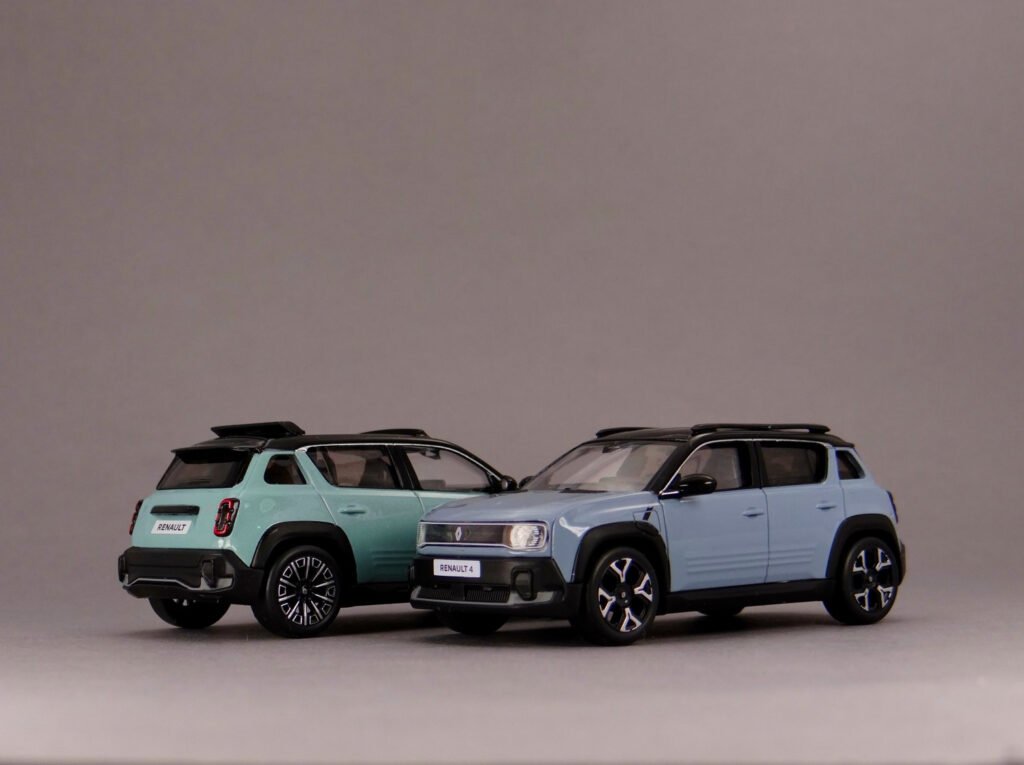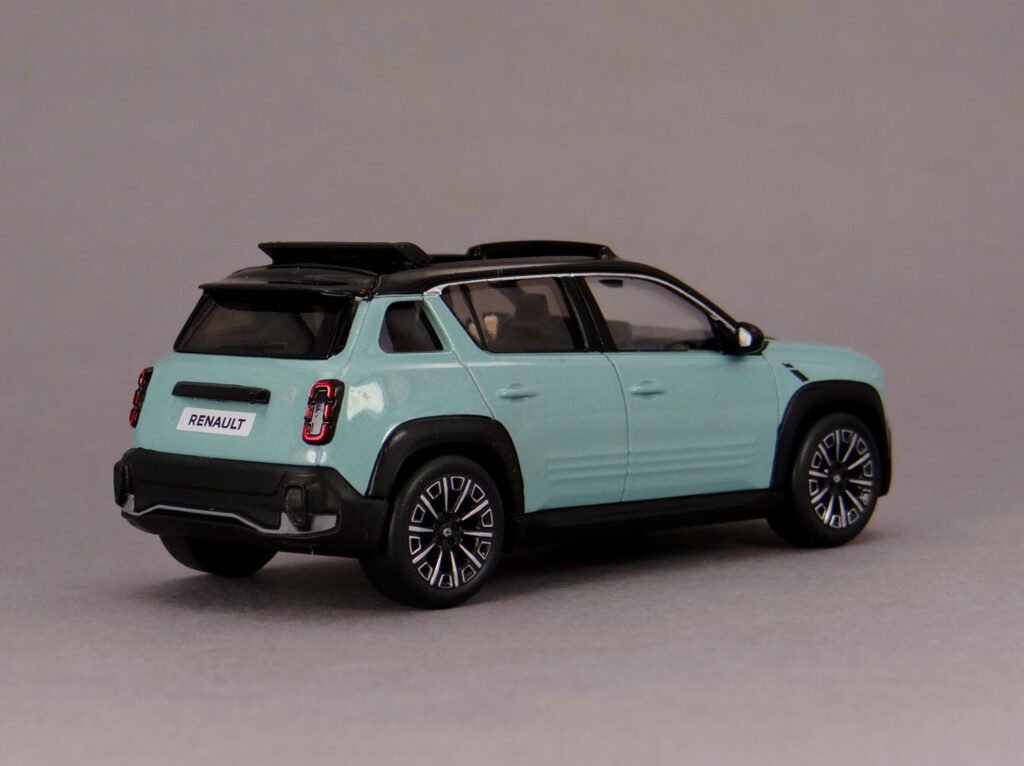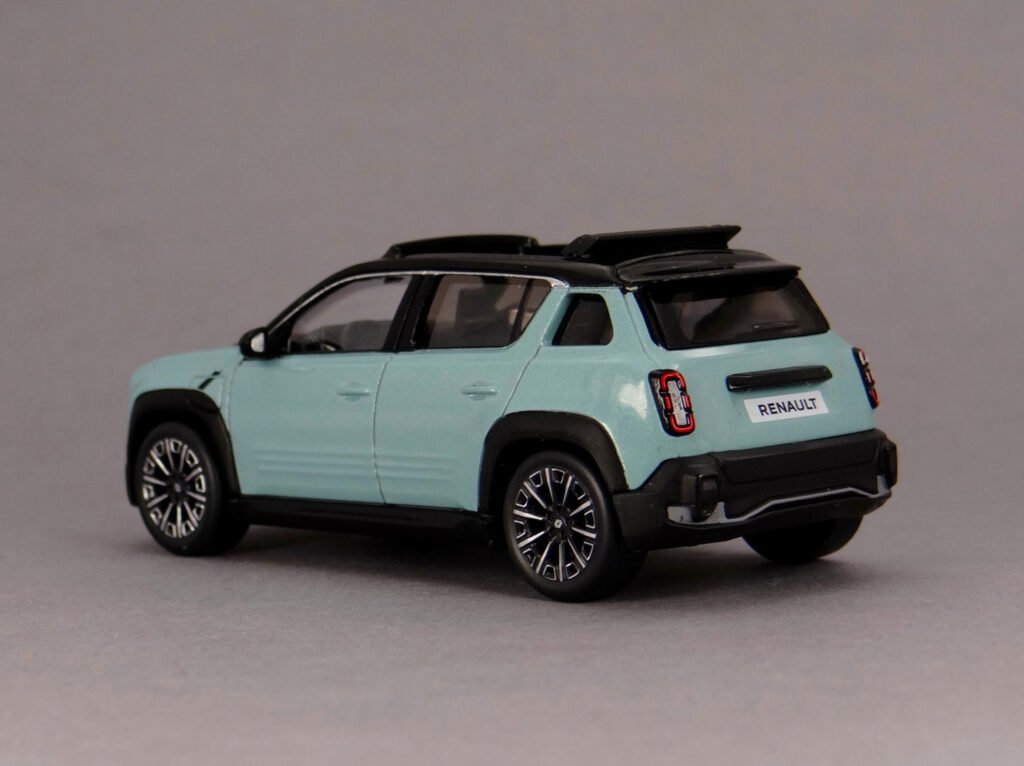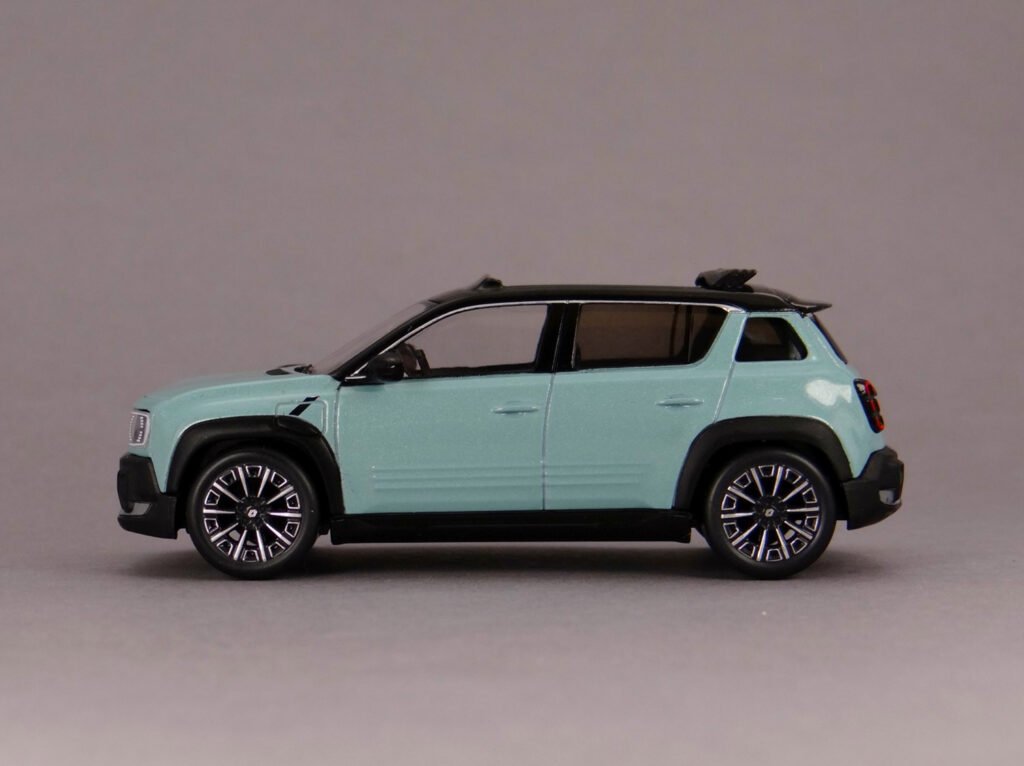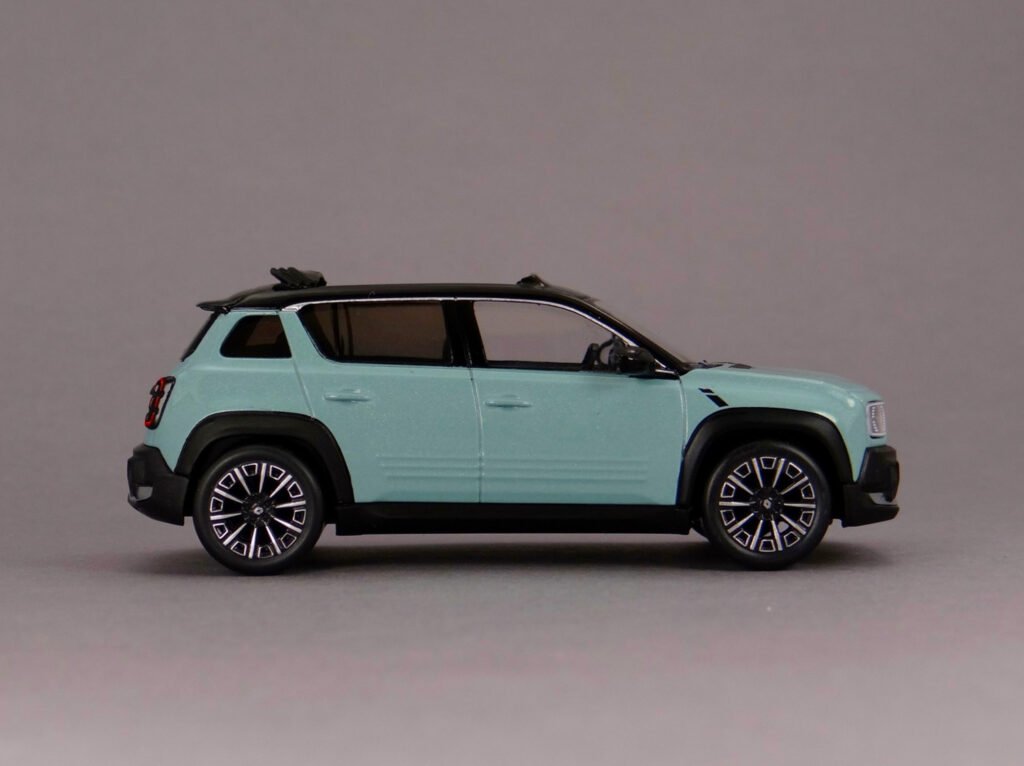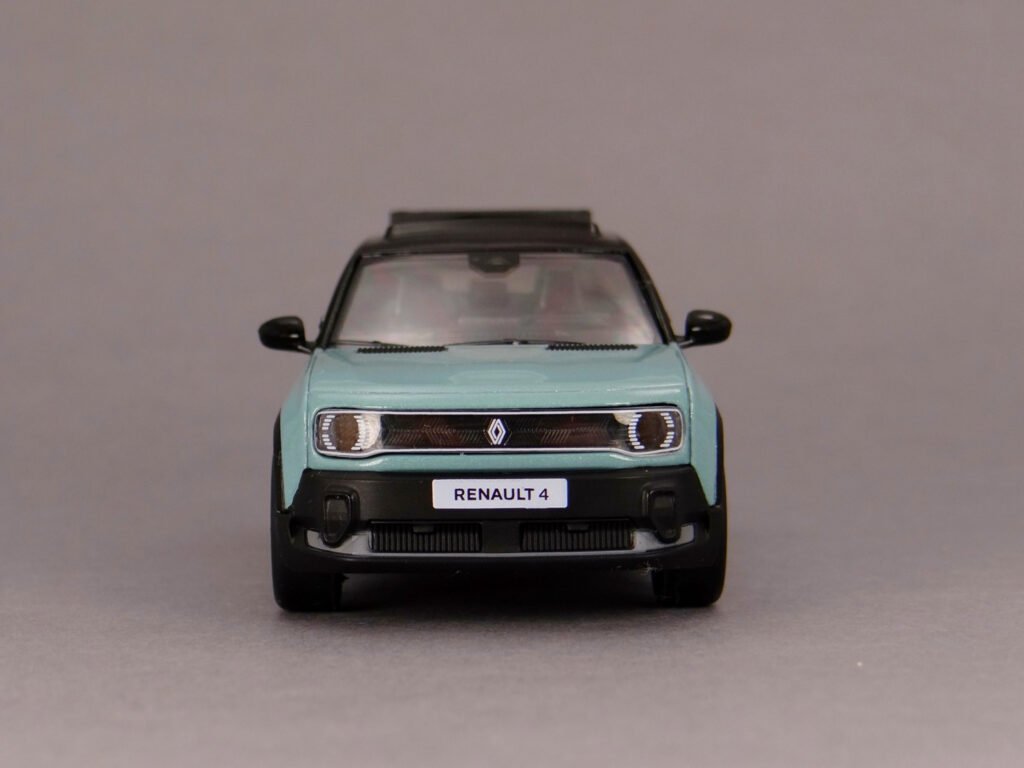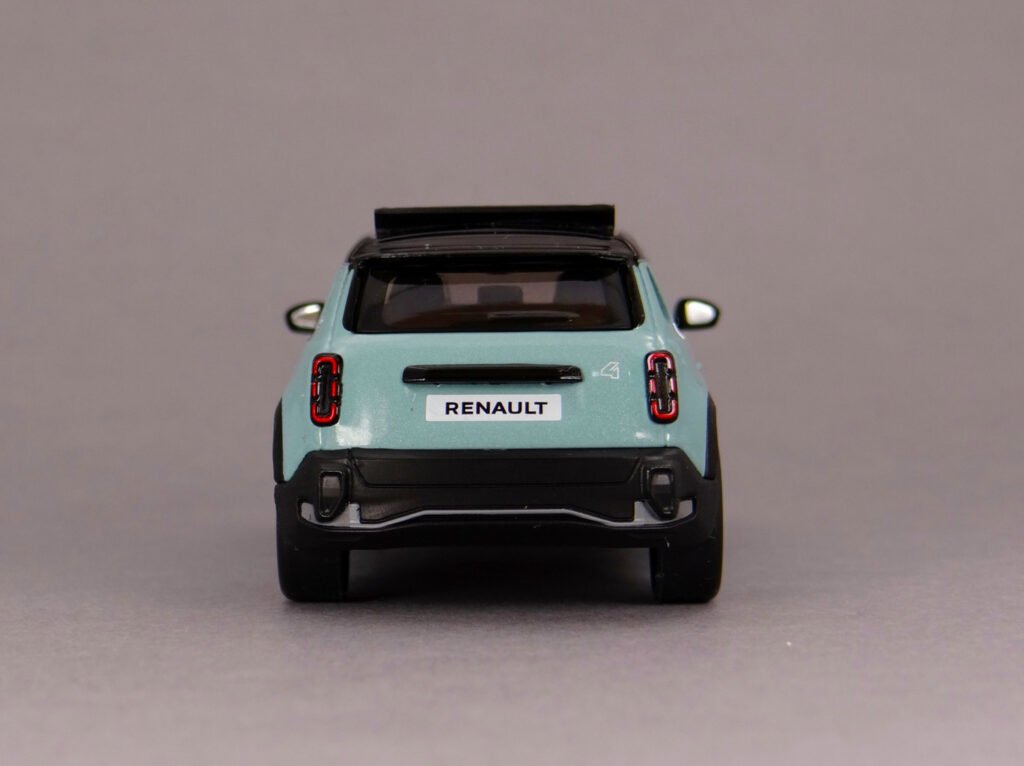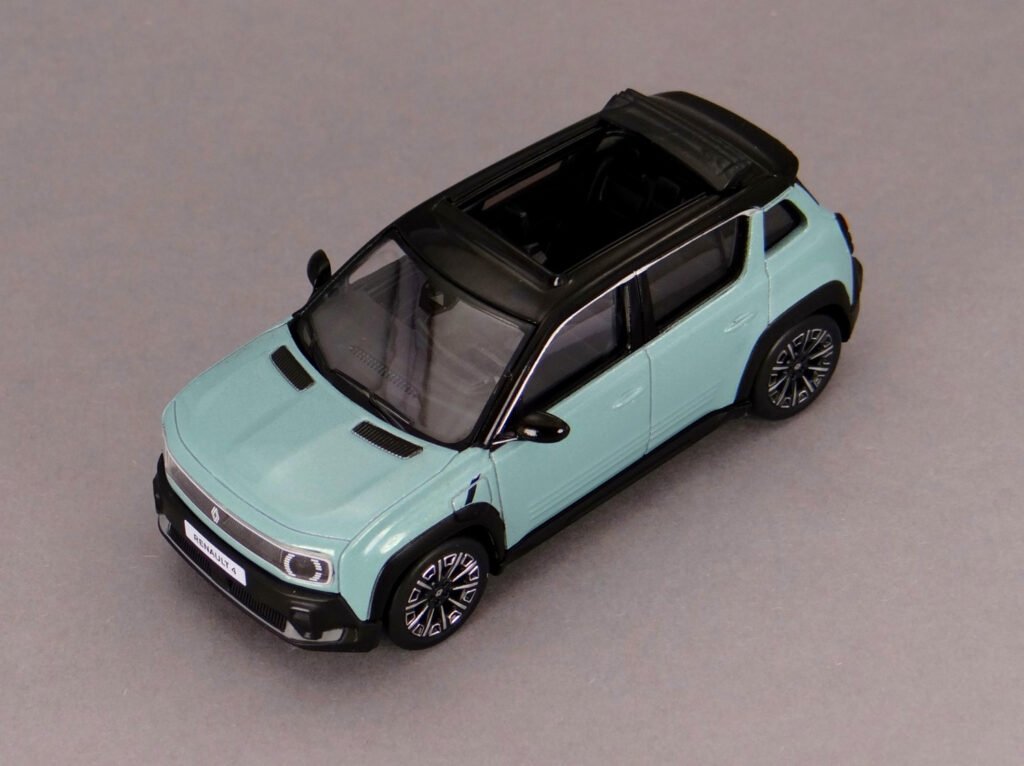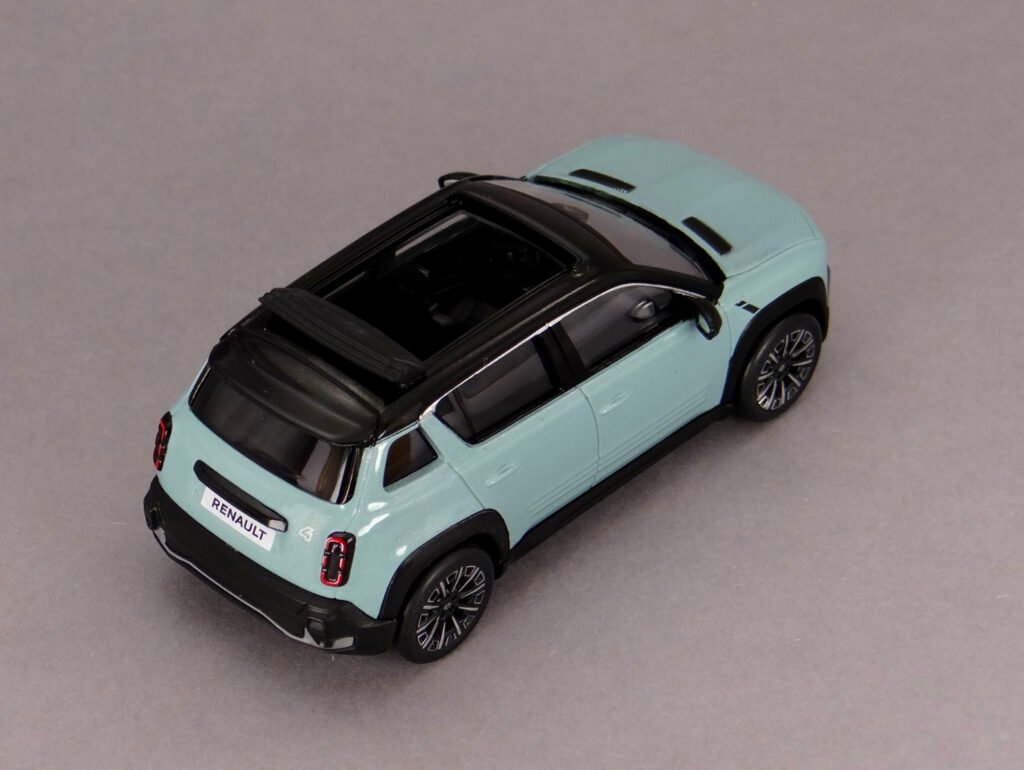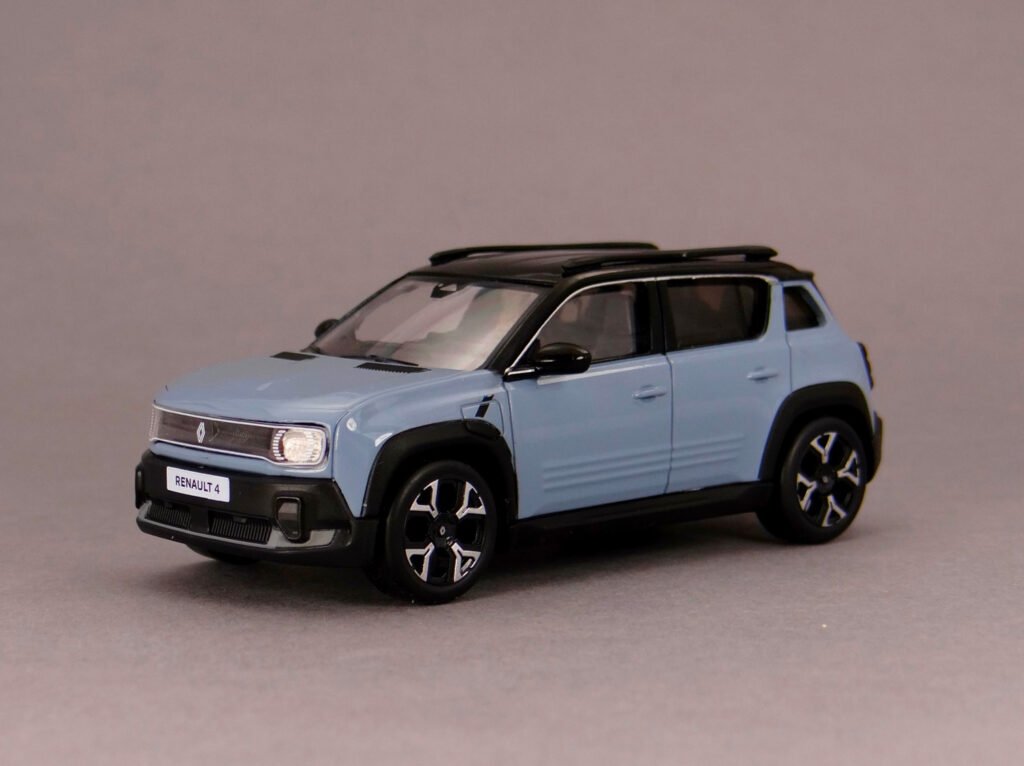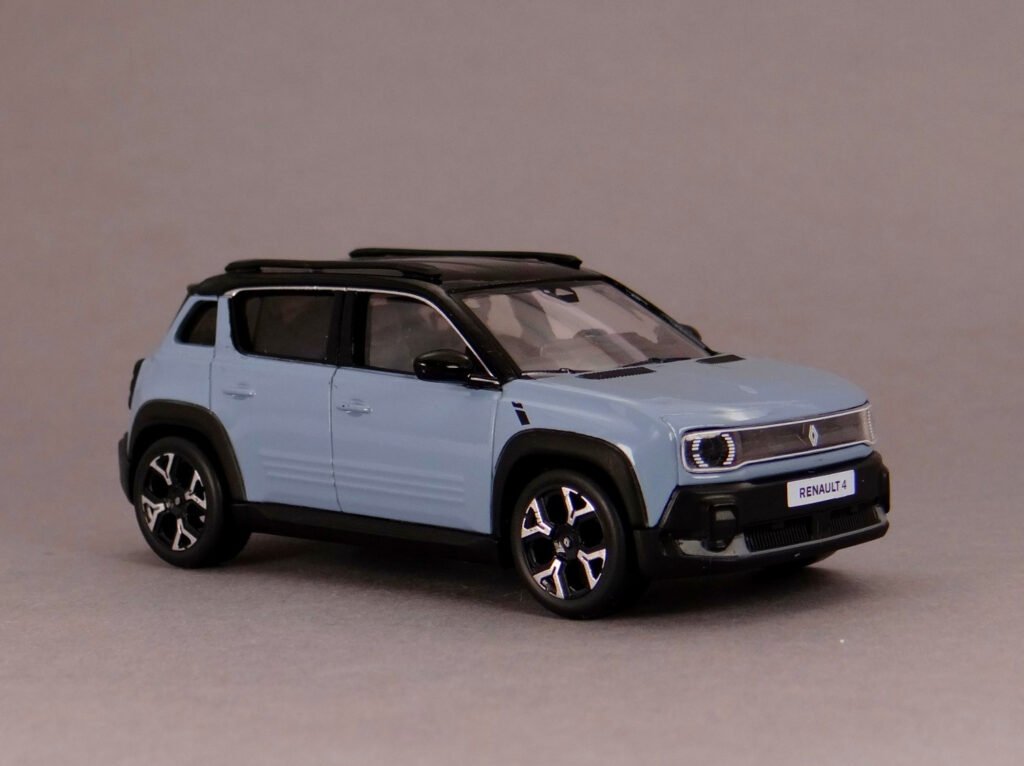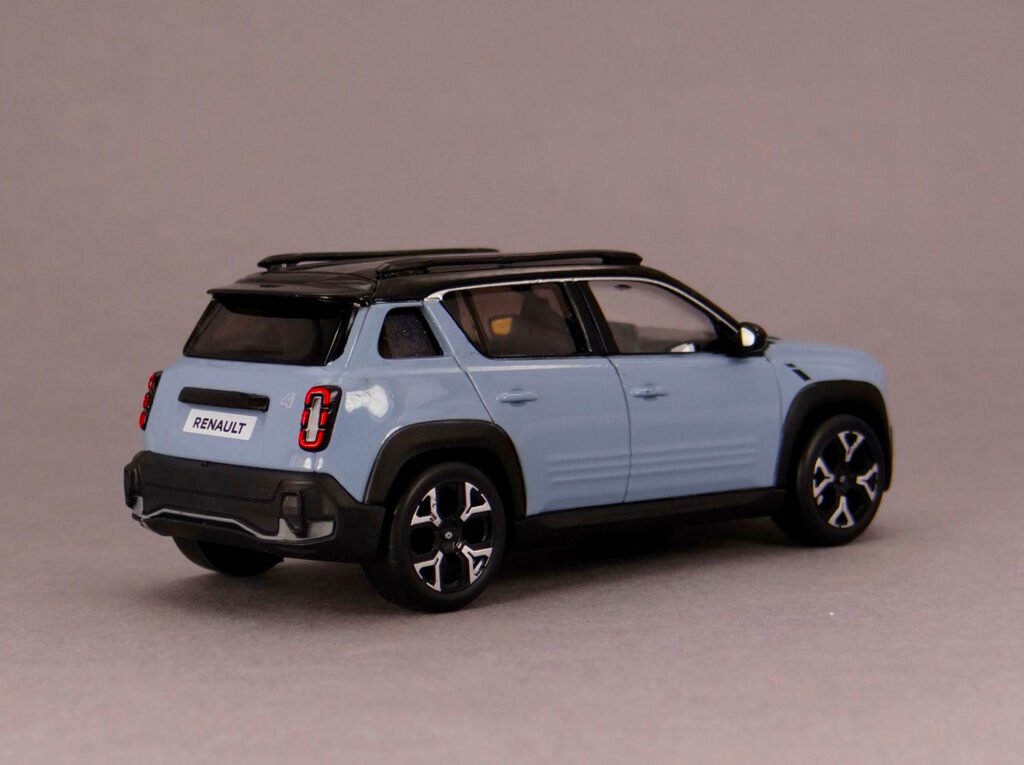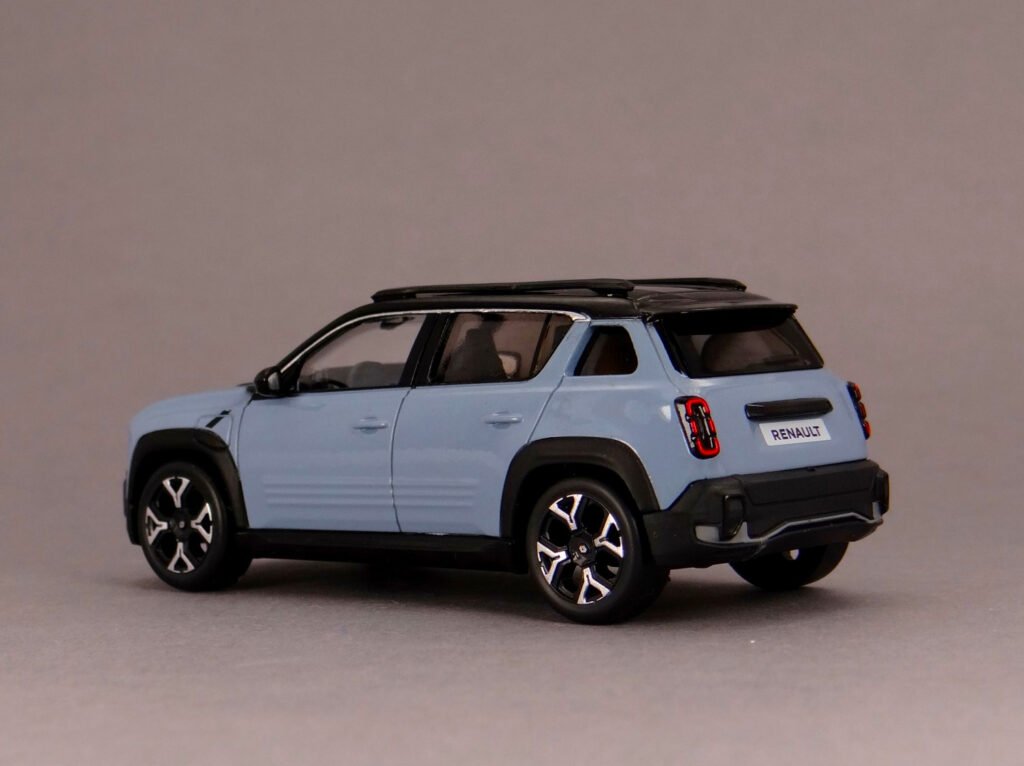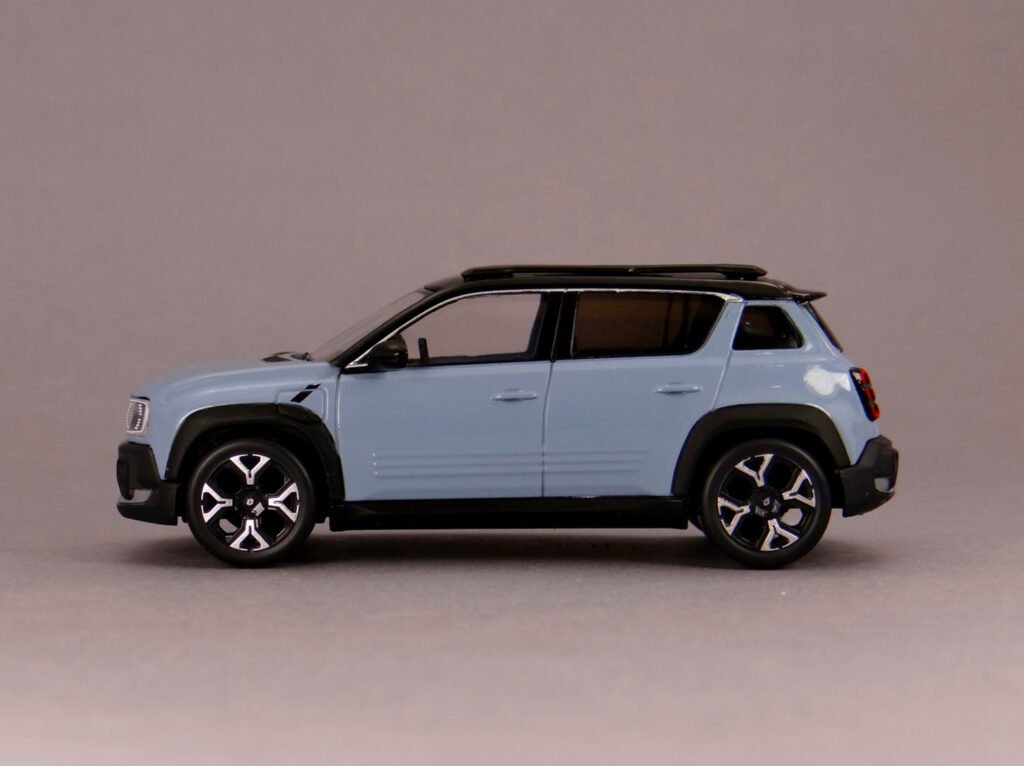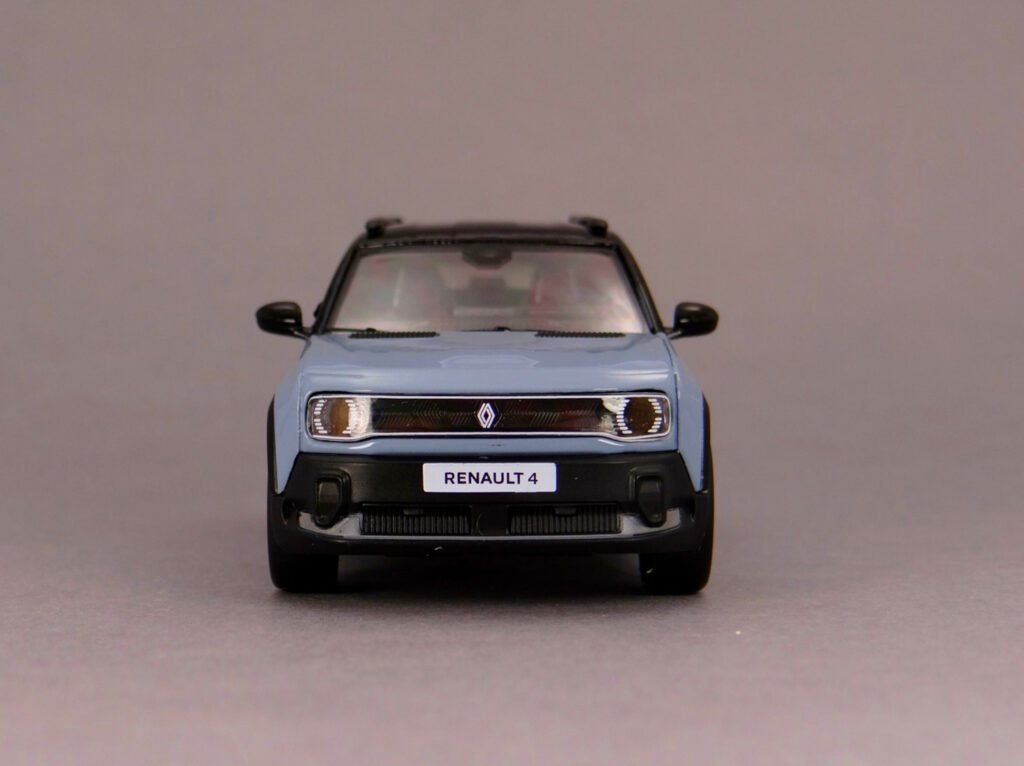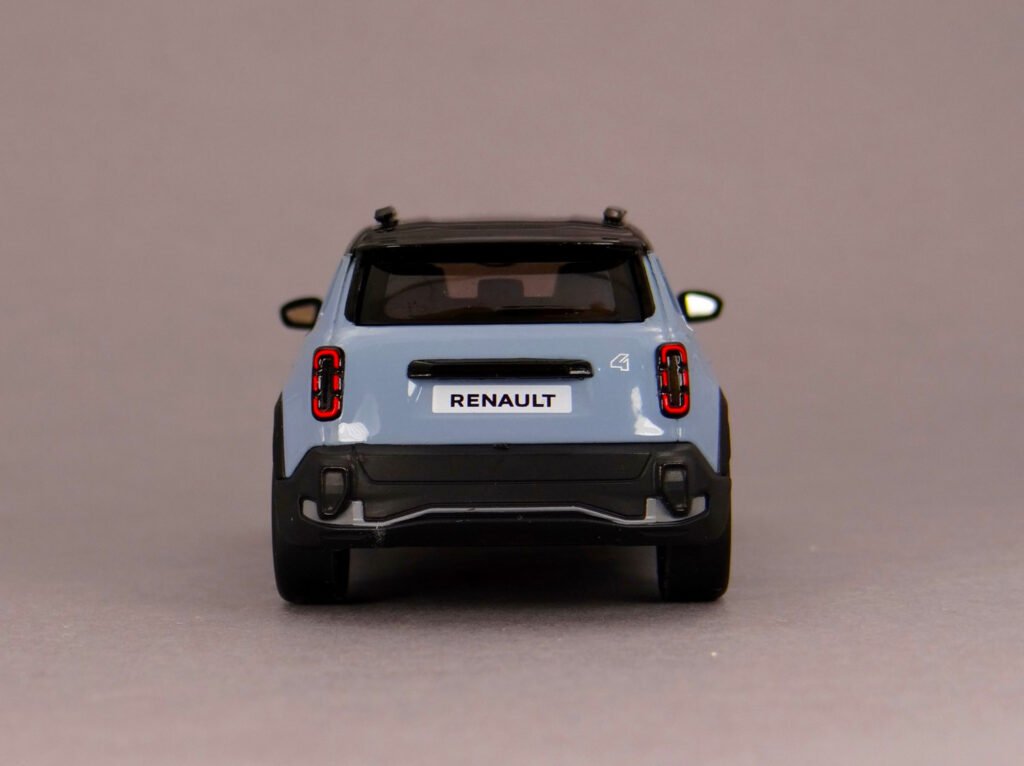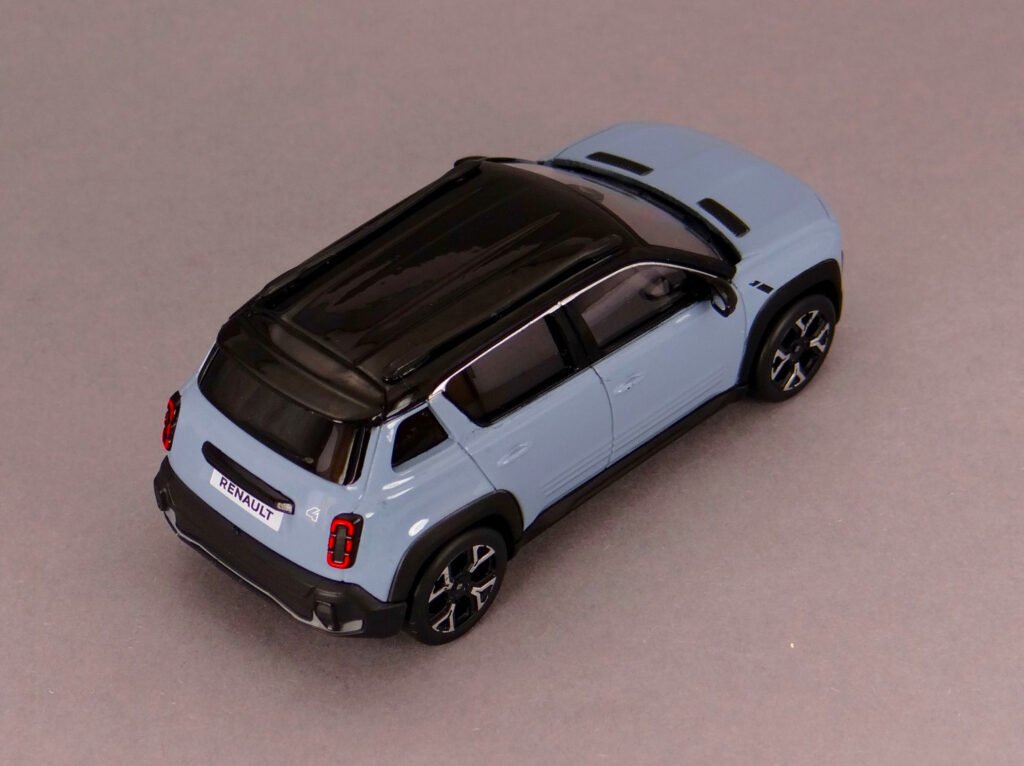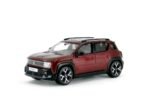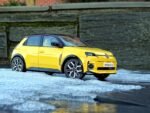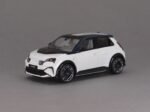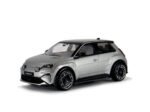Bonjour! Renault wskrzesza swoją kolejną legendę. Po elektrycznym R5, przyszła pora na współczesne wcielenie R4. Powitajmy Renault 4 E-Tech!
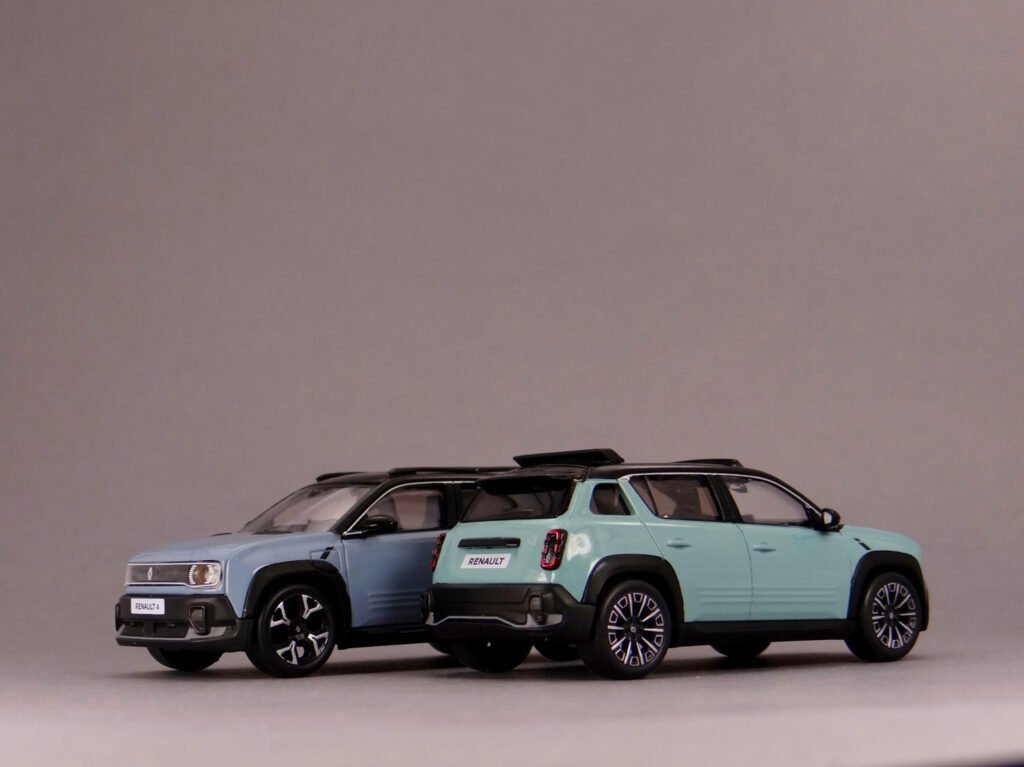
Oryginalne Renault 4 z 1961 roku to bez wątpienia samochód kultowy. Powstał jako bezpośredni konkurent dla słynnego Citroena 2CV i podobnie do niego, wyróżniał się prostotą i niezwykłą wszechstronnością. Czy to w paryskim szyku, czy na dziurawych, wiejskich drogach a nawet pustynnych szlakach, “czwórka” idealnie odnajdywała się w każdych warunkach. Tak jak para jeansów do której porównywał ją dyrektor Renault Pierre Dreyfus, “czwórka” zaskarbiła sobie serca klientów na całym świecie. Przez 33 lata produkcji sprzedano ponad 8 milionów egzemplarzy R4, co czyni go najlepiej sprzedającym się modelem marki.
Pokazane podczas tegorocznego salonu samochodowego w Paryżu nowe Renault 4 zaprojektowano jednak według nieco innych założeń. To nie jest już tylko prosty i tani samochód, lecz nowoczesny, elektryczny crossover. Francuzi podążają tutaj taką samą ścieżką jak w przypadku nowego R5. Uwspółcześniają klasyczny projekt i wypełniają go najnowocześniejszymi technologiami. Dzięki temu, samochód ma szansę zainteresować młodych kierowców w ogóle nieznających oryginału, jednocześnie grając na nostalgii u tych starszych.
Wyglądem Renault 4 E-Tech przypomina koncept 4Ever Trophy z 2022 roku, jest jednak od niego spokojniejszy i w efekcie – bliższy oryginałowi. Zresztą, stylistka nowej “czwórki” pełna jest nawiązań do pierwowzoru. Już sama bryła nadwozia z prosto ściętym przodem i pochylonym tyłem imituje swojego przodka. Samochód zachował też charakterystyczne trapeizodalne tylne boczne okienka, kształt tylnych świateł i trzy przetłoczenia w dolnej części drzwi, a wszystko to oczywiście w nowoczesnym wydaniu.
Jednak to przedni pas wydaje się być głównym popisowym elementem w stylizacji modelu. Choć ewidentnie inspirowany pierwowzorem, okazuje się być technologiczną perełką. Renault twierdzi, że to pierwszy na świecie jednoczęściowy podświetlany grill, który posiada również podświetlany emblemat marki. Czynnik “wow” jest tutaj gwarantowany.
Ukłon w stronę oryginalnego 4 jest widoczny również na innych polach. Nowy model można na przykład wyposażyć w składany materiałowy dach, dodatek który był też dostępny w poprzedniku. Z kolei wzory felg noszą nazwy edycji specjalnych tego kultowego samochodu. Podstawowa wersja Evolution jako jedyna otrzymuje stalowe felgi o wzorze “Jogging” (edycja limitowana z 1981 r.). Pozostałe wersje mają już felgi aluminiowe. Wersja Techno ma felgi ze wzorem “Sixties” (edycja limitowana z 1985 r.), a topowa wersja Iconic wyjeżdża na felgach “Parisienne” (edycja limitowana z 1963 r.). Wszystkie mają rozmiar 18 cali.
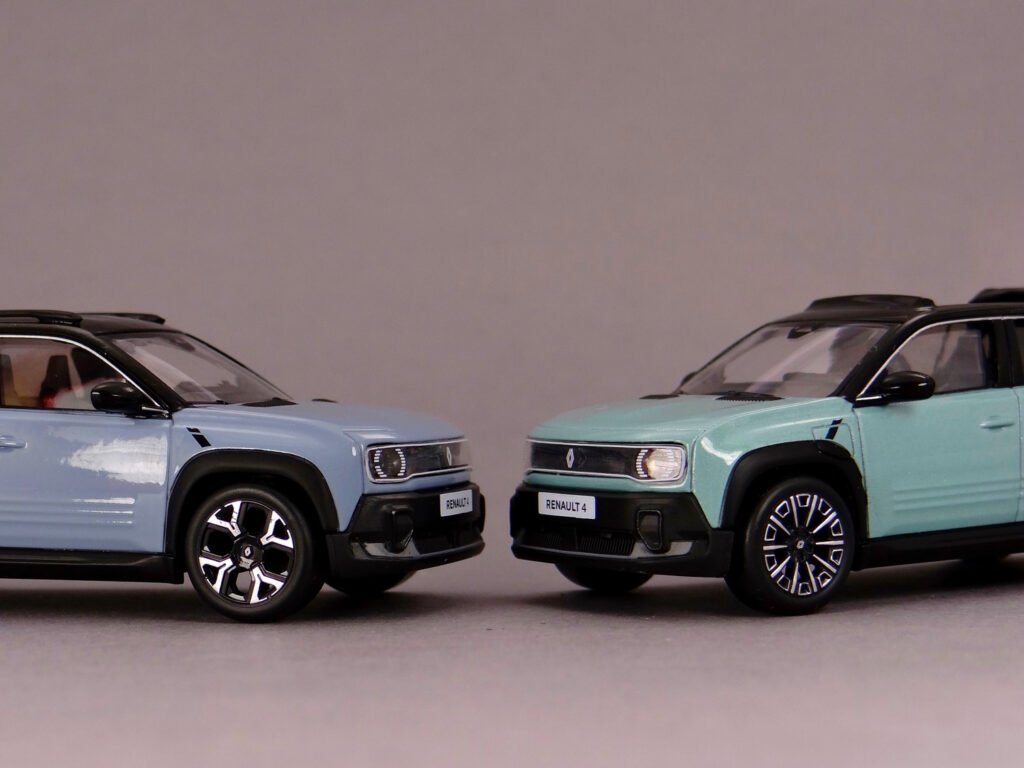
Środek nowego modelu jest niemal identyczny z tym z Renault 5 E-Tech i różni się tylko detalami. Znajdziemy tu więc dwa duże ekrany na desce rozdzielczej, uchwyt na bagietkę, tapicerowane boczki drzwi i elementy kokpitu oraz ogólną wysoką jakość montażu. Podobnie jak nowe 5 E-Tech, 4 E-Tech otrzymał system informacyjno-rozrywkowy oparty na oprogramowaniu Google oraz interaktywnego asystenta kierowcy o imieniu Reno, który wykorzystuje sztuczną inteligencję (ChatGPT).
Renault 4 E-Tech korzysta z tej samej platformy AmpR Small co 5 E-Tech, jest jednak od niego większe. Mierząc 414 cm nowa “czwórka” jest dłuższa od swojego brata o 22 cm i ma od niego o 8 cm większy rozstaw osi. Większe wymiary poskutkowały większą ilością miejsca na tylnej kanapie i większym bagażnikiem (420 litrów).
Napęd również przejęto z Renault 5 E-Tech. Do wyobru jest silnik 120 KM łączony z baterią 40 kWh lub silnik 150 KM łączony z baterią 52 kWh. W obu wersjach prędkość maksymalna jest elektronicznie ograniczona do 150 km/h. Co ciekawe, 4 E-Tech będzie pierwszym modelem Renault dostępnym z możliwością prowadzenia za pomocą jednego pedału (funkcja one pedal).
Kupujący będą mieli do wyboru siedem kolorów nadwozia, wśród nich nowe odcienie Cloud Blue i Hauts-de-France Green. Będzie też możliwość zamówienia dwubarwnego malowania. Renault twierdzi, że możliwych jest aż 670 unikalnych konfiguracji modelu 4 E-Tech, więc każdy powinien znaleźć coś dla siebie.
W elektrycznej gamie Renault, 4 E-Tech mieści się między R5 a Megane, więc należy oczekiwać że ceny to odzwierciedlą. Oficjalne cenniki poznamy jednak najprawdopodobniej dopiero za kilka miesięcy. Produkcja Renault 4 E-Tech ruszy w marcu przyszłego roku w fabryce ElectriCity w Maubeuge w południowej Francji, obok modelu 5 E-Tech. Pierwsze egzemplarze powinny dotrzeć do klientów latem.
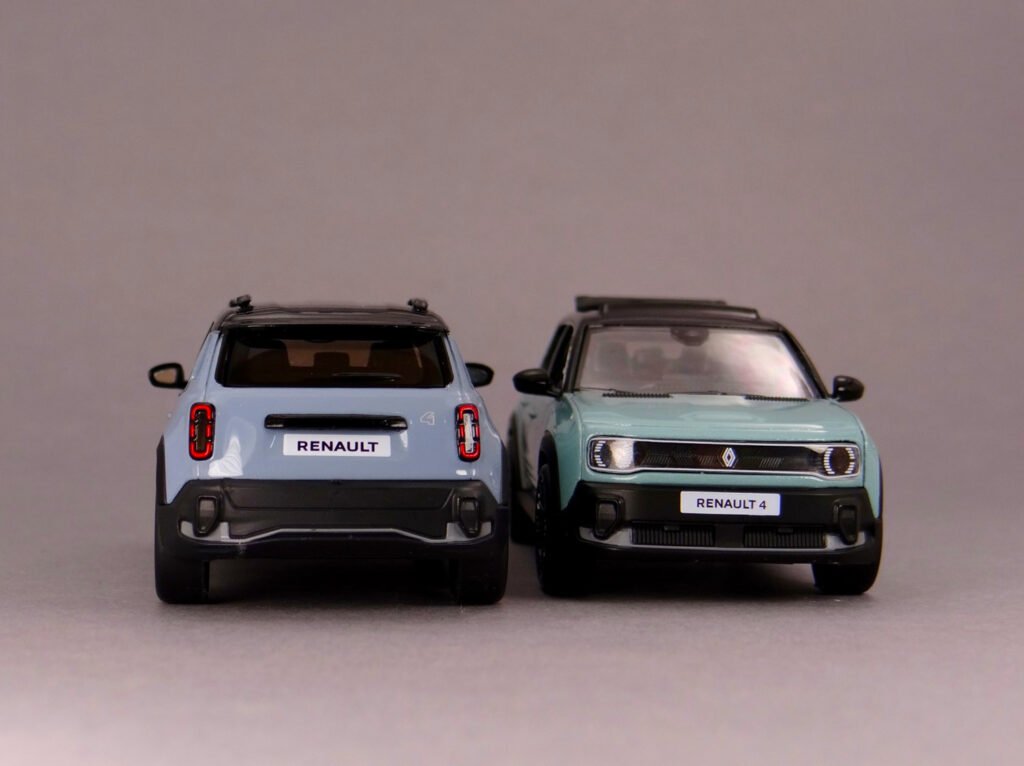
O miniaturze – Renault 4 E-Tech
Z marketingowej perspektywy Renault działa świetnie. Modele Renault 4 E-Tech w skali 1/43 firmy Norev wprowadzono do sprzedaży tego samego dnia, kiedy oficjlanie zaprezentowano prawdziwy samochód podczas targów samochodowych w Paryżu (14 października). Modele można było kupić na samym salonie lub na stronie Renault Originals. Ja do Paryża nie poleciałem, więc jedyną opcją było zamówienie przez internet.
Norev zdecydował, aby na początek wypuścić Renult 4 E-Tech w dwóch kolorach. A ponieważ pokazują one dwie różne wersje samochodu, postanowiłem kupić obie miniaturki. Ta w kolorze zielony Hauts-de-France ma otwarty materiałowy dach i felgi o wzorze “Parisienne” a ta w kolorze niebieski Cloud ma stały metalowy dach i felgi o wzorze “Sixties”.
Modeliki przyszły do mnie w piątek po południu. Pierwsze wrażenie jest dobre. Norev w końcu ogarnął temat bocznych lusterek i już wszystkie nowe modele Renault wypuszczone w tym roku mają poprawne lusterka. Niewielka poprawa nastąpiła też w kwestii kół. Nadal są plastikowe, lecz użyty w nich plastik jest bardziej matowy i wizualnie dobrze imituje gumę.
Niestety, producent zdecydował się na całkowicie czarne wnętrze. To szkoda, szczególnie w modeliku z otwartym dachem, gdzie wnętrze jest dobrze widoczne. Jasna tapicerka wyglądałaby tutaj idealnie. W środku brakuje też lusterka wstecznego. Z detali zewnętrznych, uproszczono tylne światła. W prawdziwym samochodzie ich środkowa część jest karbowana, natomiast w modeliku jest gładka i połyskująca.
Ogólnie, Norev poradził sobie przyzwoicie z Renault 4 E-Tech. Nie jest to oczywiście model najwyższej klasy modelarskiej, ale wygląda lepiej niż wcześniejsze modele Renault od Noreva. Jeśli zbieracie francuskie samochody, to jest to na pewno ciekawa propozycja. Oczywiście, najpierw obejrzyjcie zdjęcia i zadecydujcie co myślicie!
Na koniec, pamiętajcie o odwiedzeniu profili MiniAuotmobili na Facebooku i Instagramie!
*** ENGLISH ***
Bonjour! Renault resurrects another one of its classics. Following the electric R5, it’s time for the modern incarnation of the R4. Let’s welcome the Renault 4 E-Tech!
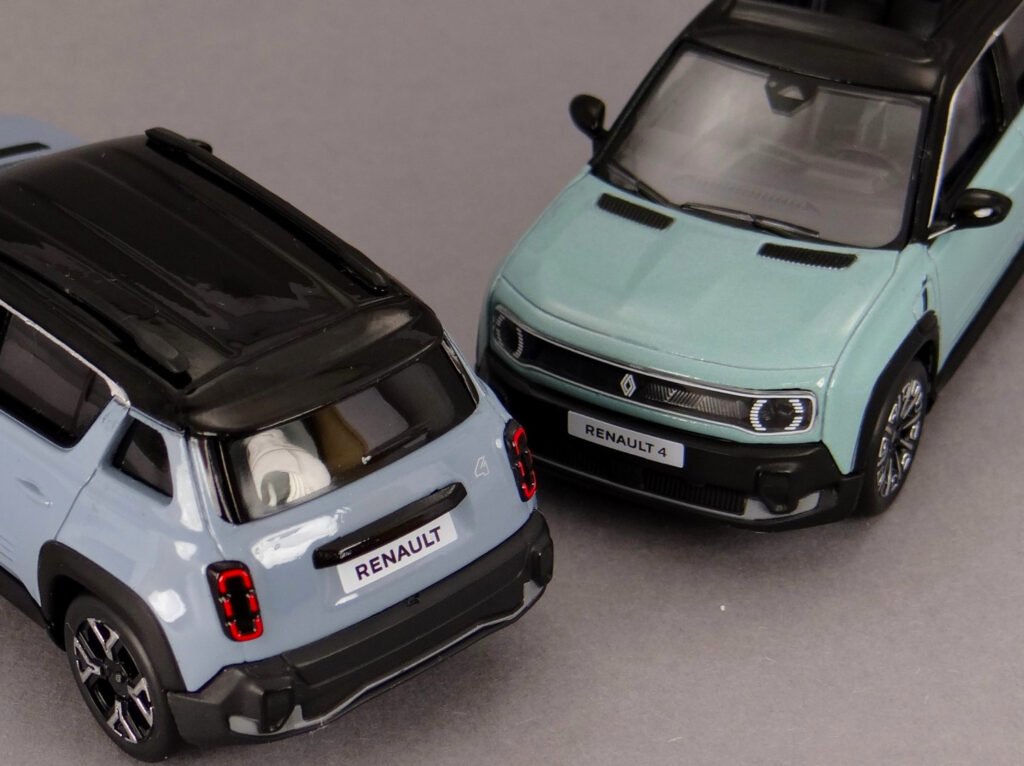
The original Renault 4 from 1961 is undoubtedly a cult car. It was created as a direct rival to the famous Citroen 2CV and similarly to it, it stood out with its simplicity and incredible versatility. Whether it was parisian chic, bumpy rural tracks or even desert trails, the “four” found itself at home in all conditions. Just like a pair of jeans to which it was compared to by Renault’s chief Pierre Dreyfus, the “four” won the hearts of buyers all over the world. During the 33-year production run over 8 million units were produced, which makes it the brand’s best-selling model.
The new Renault 4 unveiled at this year’s Paris Motor Show was designed following a slightly different brief however. It is no longer just a simplistic and cheap car, but a modern electric crossover. The French are following the same path here as with the new R5. They contemporise a classic design and pack it full of latest tech. Thanks to that, the car can attract younger drivers who don’t know the original at all, while playing at the nostalgia of older ones at the same time.
In terms of looks, the Renault 4 E-Tech resembles the 2022 4Ever Trophy concept, but it’s more tame and in effect – closer to the original. The design of the new “four” is full of references to it. The body outline alone, with the flat front end and sloping tail, clearly mimics its ancestor. The car also retained the distinctive trapeizodal rear quarter windows, the tail-light shape and three lines sculpted along the door sills. All with a contemporary twist of course.
However, it’s the front fascia that seems to be the model’s main signature design feature. While it’s clearly inspired by the original, it appears to be a technological gem. Renault claims that it is the world’s first one-piece illuminated grille, which also features the brand’s illuminated emblem. The “wow” factor is certainly guaranteed here.
A nod to the original 4 is also visible in other areas. The new model can be equipped with an opening canvas roof for example, a feature that was also available in its predecessor. The wheel designs on the other hand, were all named after special editions of the cult car. The basic Evolution trim is the only one to get steel wheels with a “Jogging” design (a limited edition from 1981), while all the other trim levels get alloys. The Techno trim gets “Sixties” design wheels (a limited edition from 1985), while the top-spec Iconic drives on “Parisienne” wheels (a limited edition from 1963). All are 18-inch as standard.
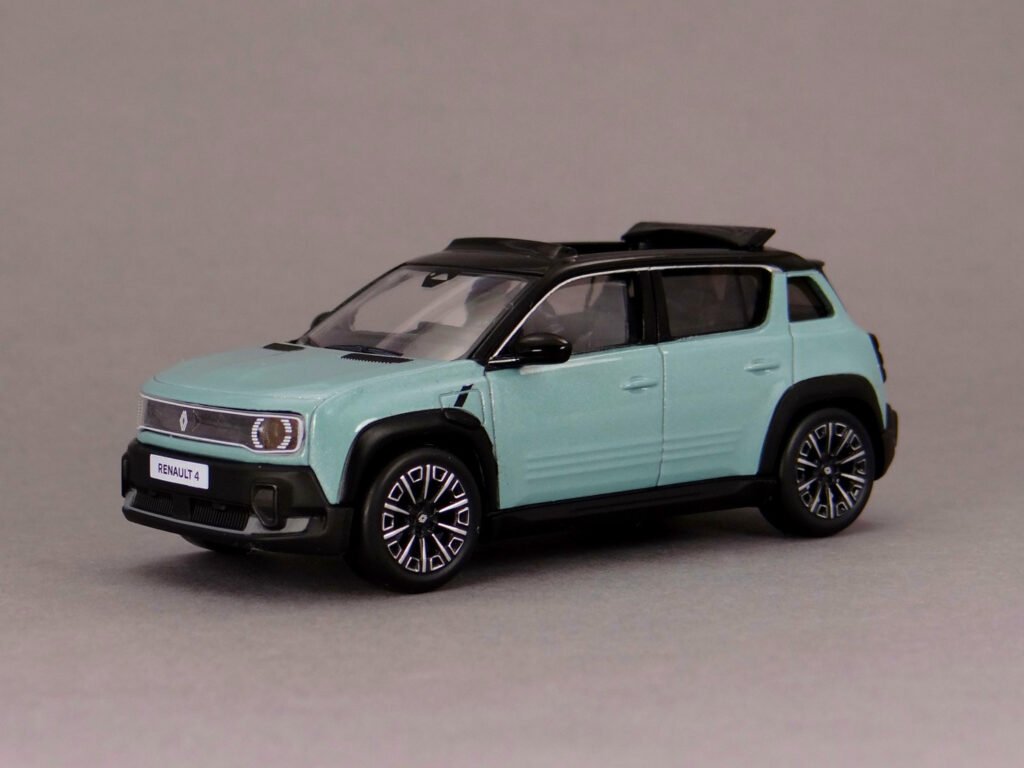
The interior of the new model is almost identical with that of the Renault 5 E-Tech, albeit differing in small detail. Therefore, we’ll find here two big screens on the cockpit, a baguette holder, upholstered door panels and parts of the dashboard, as well as an overall high build-quality. Similarly to the 5 E-Tech, the 4 E-Tech gets a Google-based infotainment system and an interactive driver’s assistant called Reno, which uses artificial intelligence (ChatGPT).
The Renault 4 E-Tech uses the same AmpR Small platform as the 5 E-Tech, but it’s larger that it. At 414 cm the new “four” is 22cm longer than its brother and has an 8 cm-longer wheelbase. Larger dimensions resulted in more space on the rear bench and a larger boot (420 litres).
The powertrain was also taken from the Renault 5 E-Tech. There is a choice of a 120 hp engine paired with a 40 kWh battery or a 150 hp engine coupled with a 52 kWh battery. In both variants the top speed was electronically limited to 150 km/h (93 mph). Interestingly, the 4 E-Tech will be Renault’s first model available with a one-pedal driving mode.
The buyers will get a choice of seven body colours, including new shades called Cloud Blue and Hauts-de-France Green. There will also be an option of a two-tone paintwork. Renault claims that there is as much as 670 possible unique combinations of the 4 E-Tech, so everyone should find something that tickles their fancy.
In Renault’s electric range, the 4 E-Tech fits between the R5 and the Megane, so we should expect the prices to reflect that. The official price list won’t be released until a few months however. The assembly of the Renault 4 E-Tech will start in March next year at the ElectriCity plant in Maubeuge in northern France, alongside the 5 E-Tech. The first cars should get to the customers in the summer.
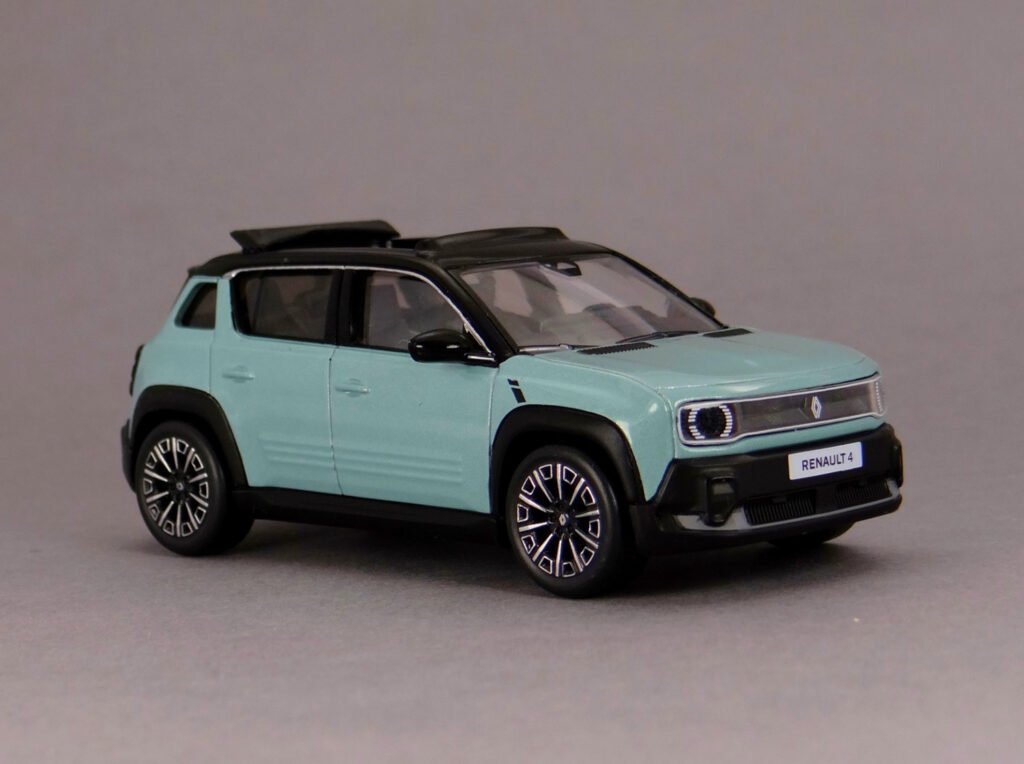
About the miniature – Renault 4 E-Tech
From a marketing perspective Renault certainly acts great. The 1/43 scale models of Renault 4 E-Tech by Norev went on sale the same day the real car was officially presented at the Paris Motor Show (14th October). The model cars could be bought at the show itself or through the Renault Originals website. I didn’t go to Paris, so the only option was ordering them online.
Norev decided to release the Renault 4 E-Tech in two colours initially. Since they showcase two different versions of the car, I decided to get both miniatures. The one in Hauts-de-France Green has an opened canvas roof and “Parisienne” design wheels, while the Cloud Blue model has a rigid metal roof and “Sixties” design wheels.
The model cars got to me on Friday in the afternoon. The first impression is a good one. Norev finally sorted out the issue of wing mirrors and now all new Renault models released this year have the correct mirrors. There was also a small improvement in terms of wheels. They are still plastic, but the plastic used is a lot more matte and it does a good job of visually imitating rubber.
Unfortunately, the manufacturer decided on using an all-black interior. It’s a shame, particularly in the open-top model, where the interior is clearly visible. A light-coloured upholstery would look ideal here. Inside, there is also no rear-view mirror either. In terms of exterior detail, the rear lights were simplified. In the real car their middle section is corrugated, but in the model it is smooth and glossy.
Overall, Norev did a decent job of the Renault 4 E-Tech. Of course, it’s not a model of the top collector’s class, but it looks better than Norev’s earlier Renault models. If you’re collection French cars, then this is certainly an interesting offering. Obviously, take a look at the photos and decide what you think first!
Lastly, remember to visit MiniAutomobile’s profiles on Facebook and Instagram!
